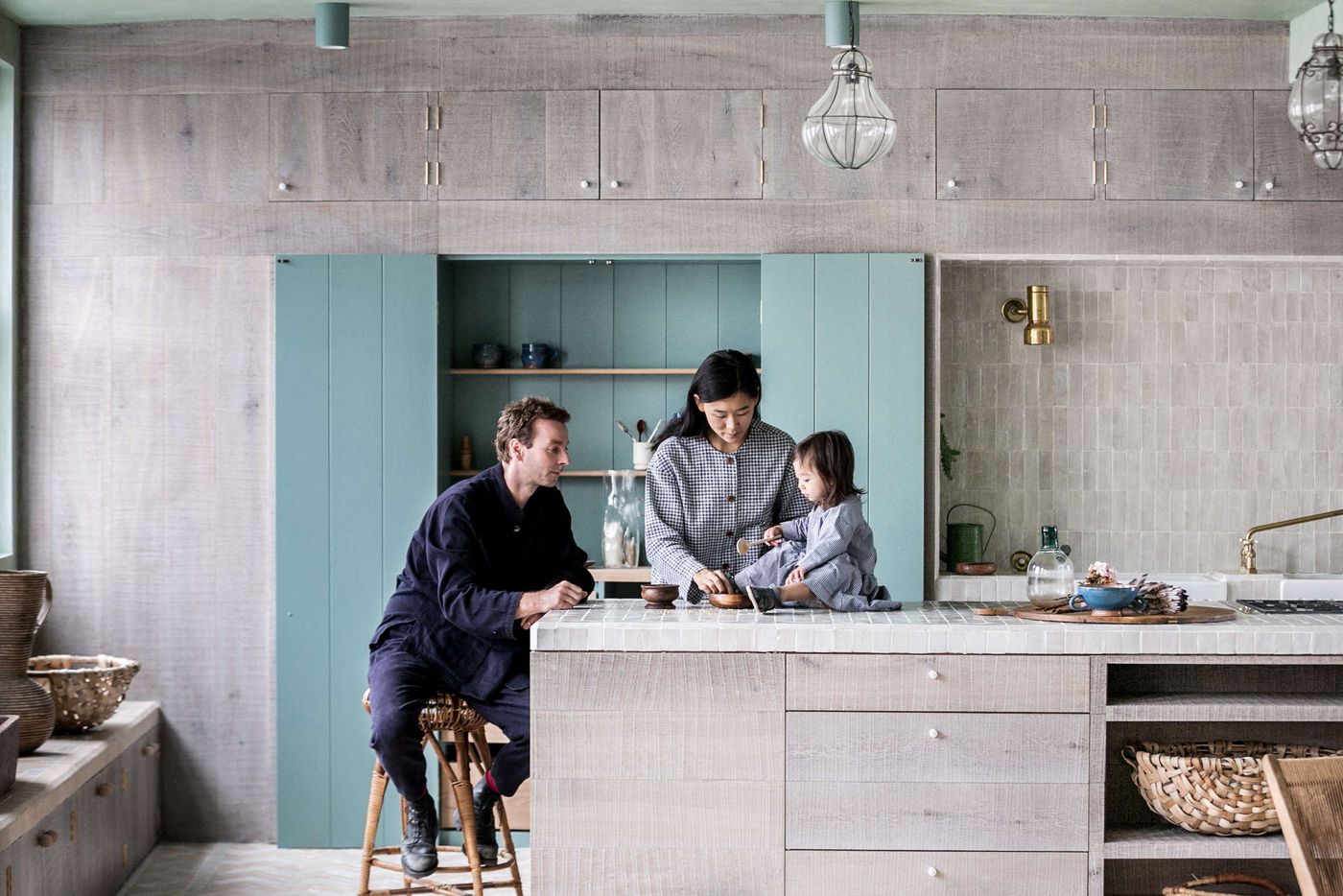
Chan + Eayrs' Hands-On Approach to Home Making: The Beldi Apartment in London
Words by Eric David
Location
London, United Kingdom
Chan + Eayrs' Hands-On Approach to Home Making: The Beldi Apartment in London
Words by Eric David
London, United Kingdom
London, United Kingdom
Location
Husband-and-wife team Zoe Chan and Merlin Eayrs, the creative duo behind Chan + Eayrs, are true home makers in both literal and figurative terms. Not only do they craft bespoke homes from the ground up, from finding the right site to designing and building it down to the last detail, they also live in the property for a while before selling and moving on to their next project. Untethered from the demands of clients, and the pressure of developers, their holistic, focused approach—they only work on one home at a time— ensures complete creative freedom and rewards them with the rare satisfaction as architects to get to experience what they have created first-hand.
Chan + Eayrs’ latest home, The Beldi, a converted loft space in a former shoe factory in Shoreditch, London, gracefully exemplifies their concept-driven and detail-orientated home making approach. Drawing from the traditional courtyard houses they encountered on their travels, from the Moroccan “riads” they visited in Marrakech where they got married, to those in Suzhou, China, where they travelled with their young daughter, the once industrial space has been re-imagined as an open-plan oasis of soothing simplicity and handcrafted beauty, resplendent in verdant hues and natural textures: lime plaster walls, linen shutters, limed oak brush timber carpentry, and Beldi tiles—a type of terracotta tile traditionally handcrafted in Morocco from which the residence takes its name.

Photo by Taran Wilkhu.
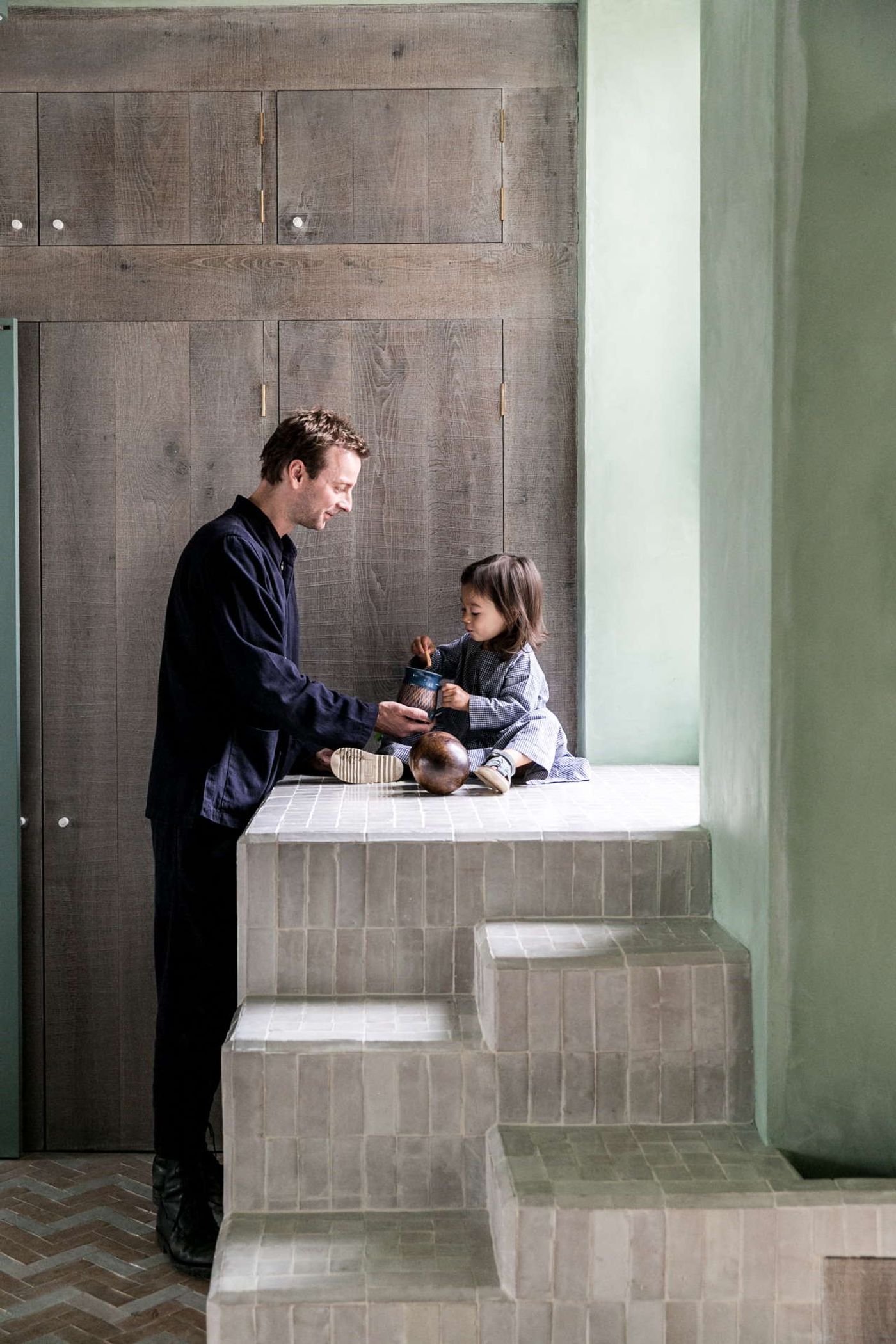
Photo by Taran Wilkhu.
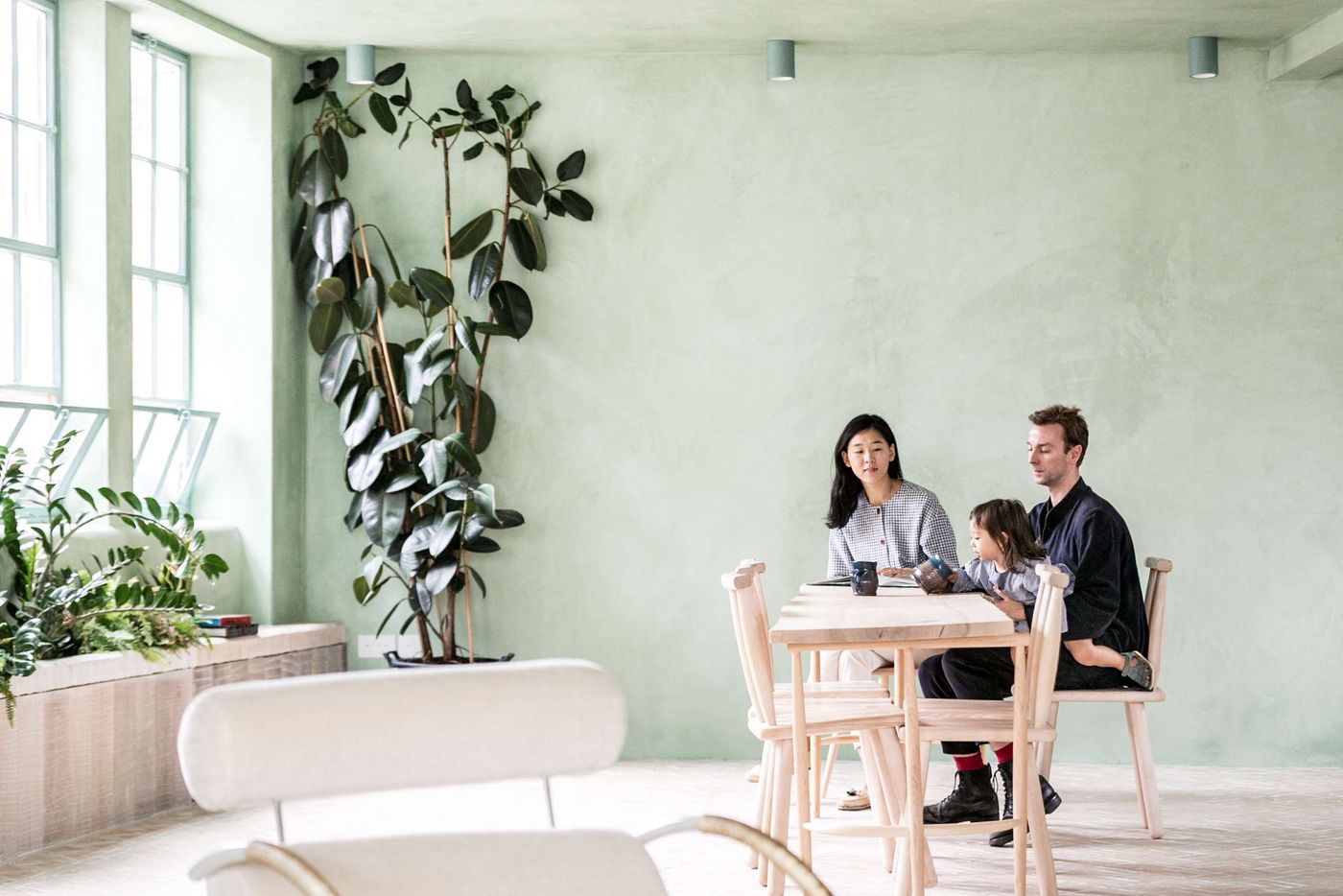
Photo by Taran Wilkhu.
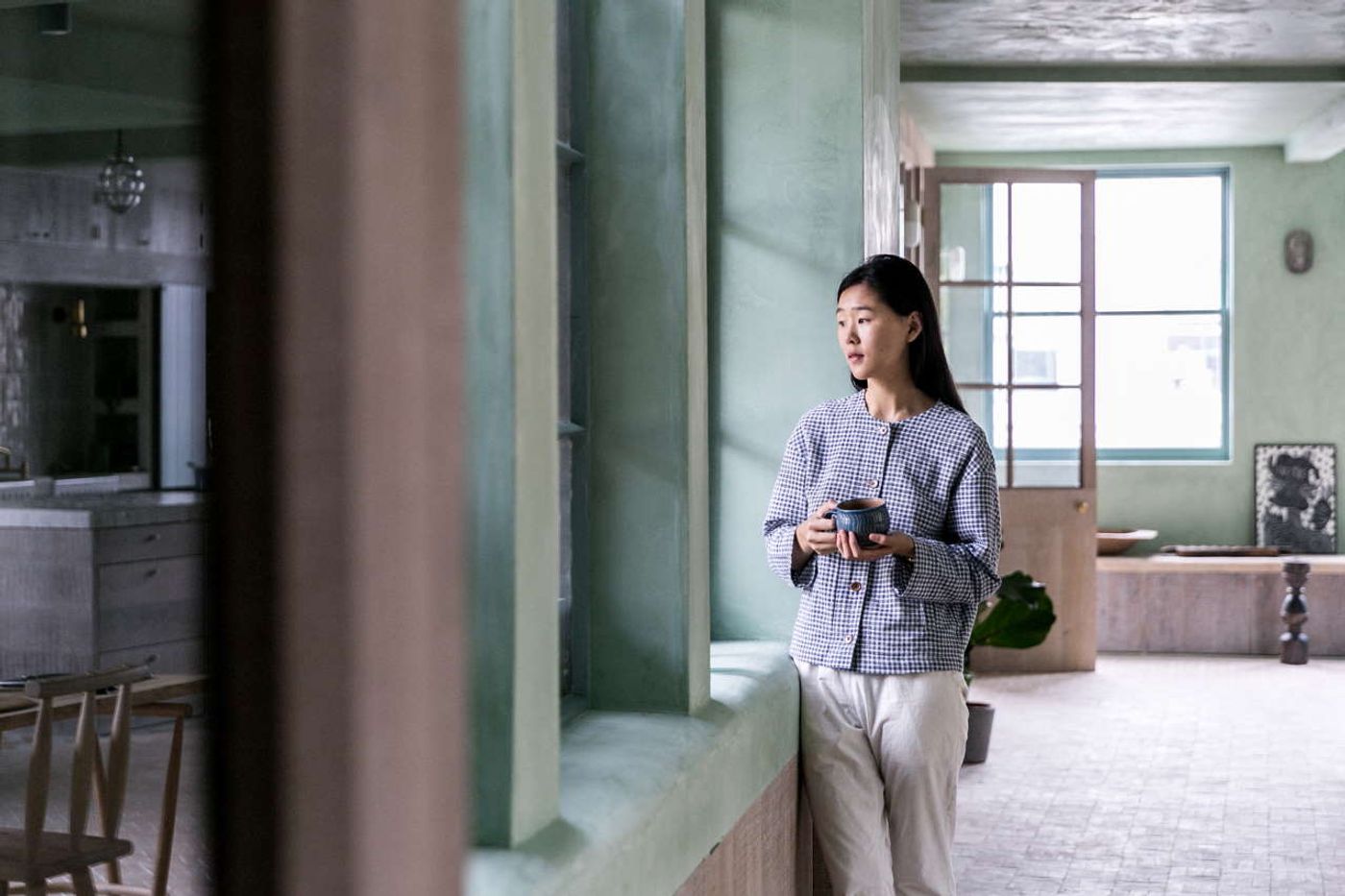
Photo by Taran Wilkhu.
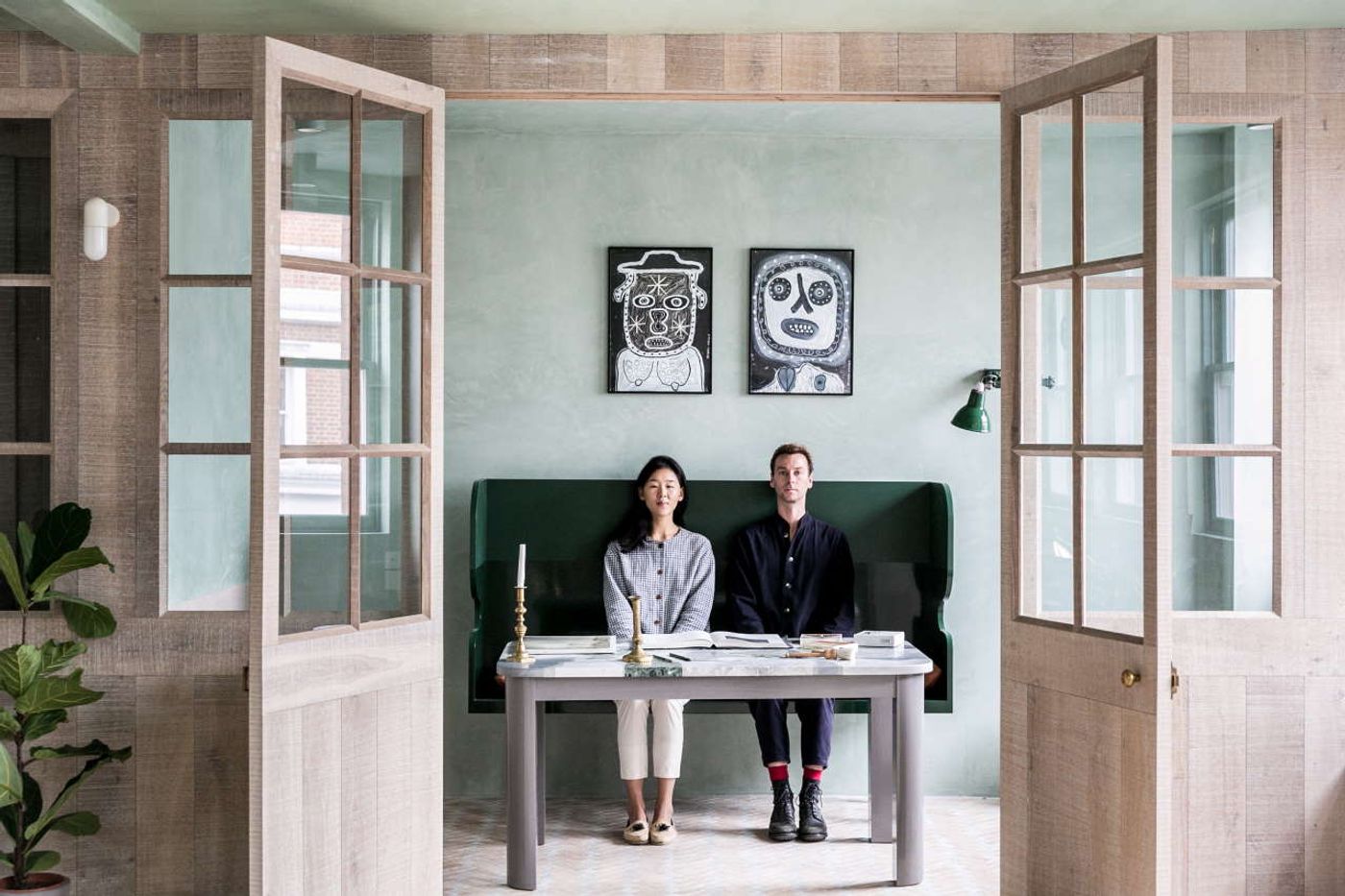
Photo by Taran Wilkhu.
The loft occupies an entire floor of a converted factory building, a rare occurrence which was one of the main reasons this site was chosen, along with the abundance of natural light, courtesy of the 30 original Crittall windows on all four sides, and the generous views over the treetops and Leonard’s Church next door. Instead of brainstorming over drafting boards or sketch books, the first thing Chan and Eayrs did when they acquired the property was to take out all of the walls and temporarily live in the empty space in order “to understand the light volumes and temperature at all times of the day”, as they explain. What came out of this pedagogical sojourn is an open-plan layout where, instead of conventional walls, the ‘rooms’ are delineated by the shifting patterns and borders of the handmade floor tiles.
Crafted out of handmade Moroccan tiles in their natural terracotta texture or in a glazed white version, laid out in Basketweave and Herringbone patterns—the latter a reference to their first ever project the Herringbone house—and interlocking geometries found in traditional courtyard houses in Suzhou, China, the loft’s floors are, in the couple’s own words, “a woven visual map of their travels and history”.
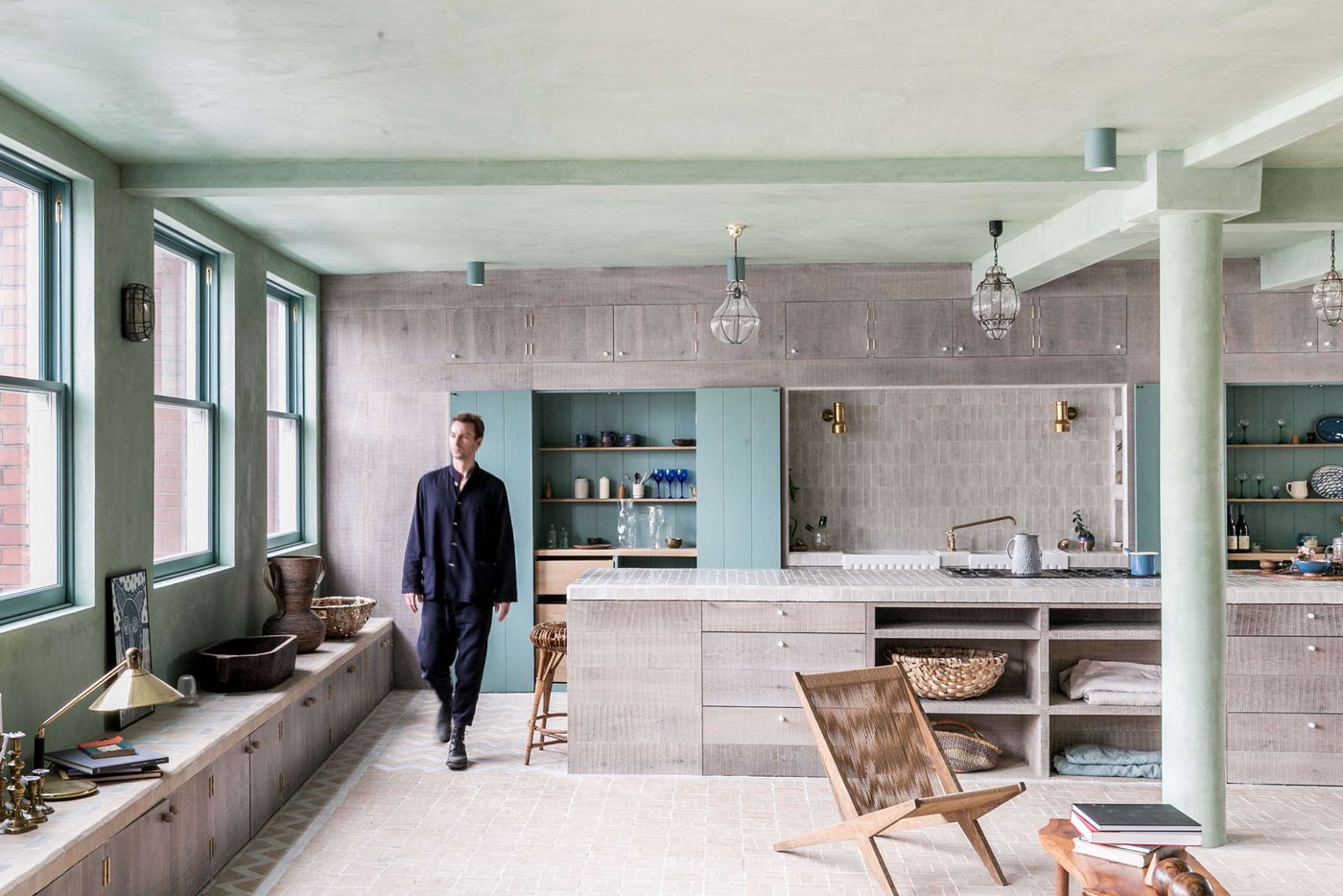
Photo by Taran Wilkhu.
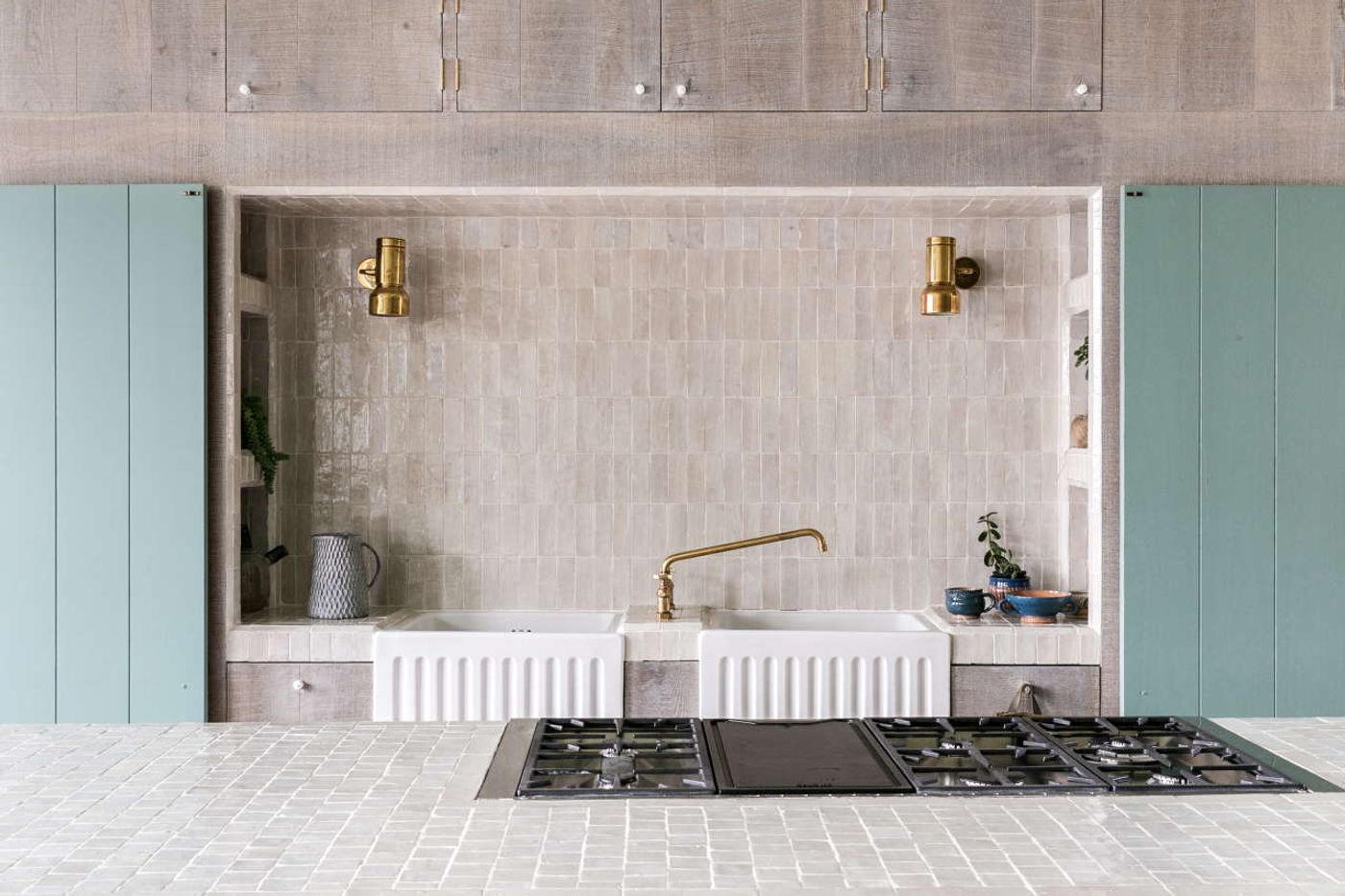
Photo by Taran Wilkhu.
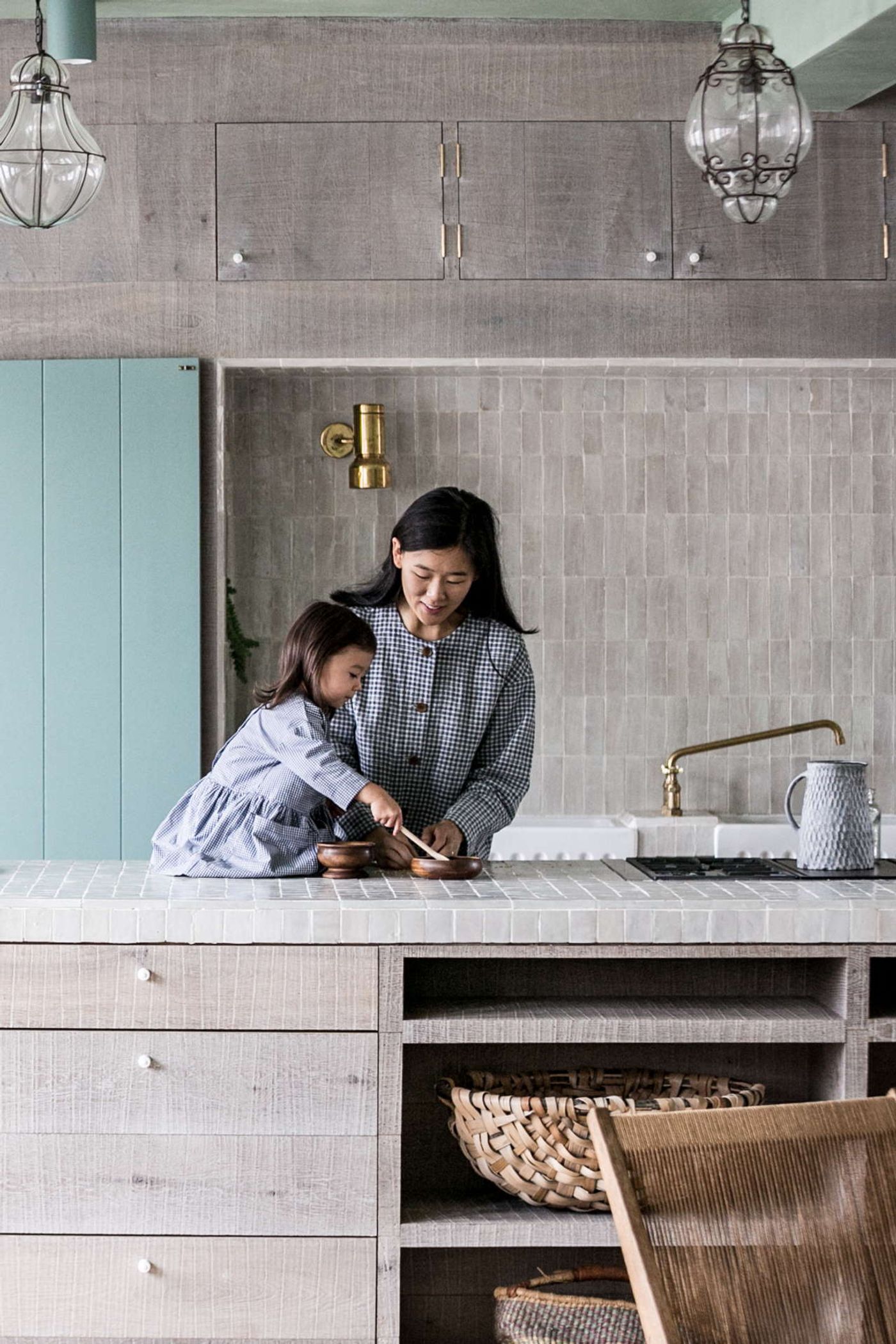
Photo by Taran Wilkhu.
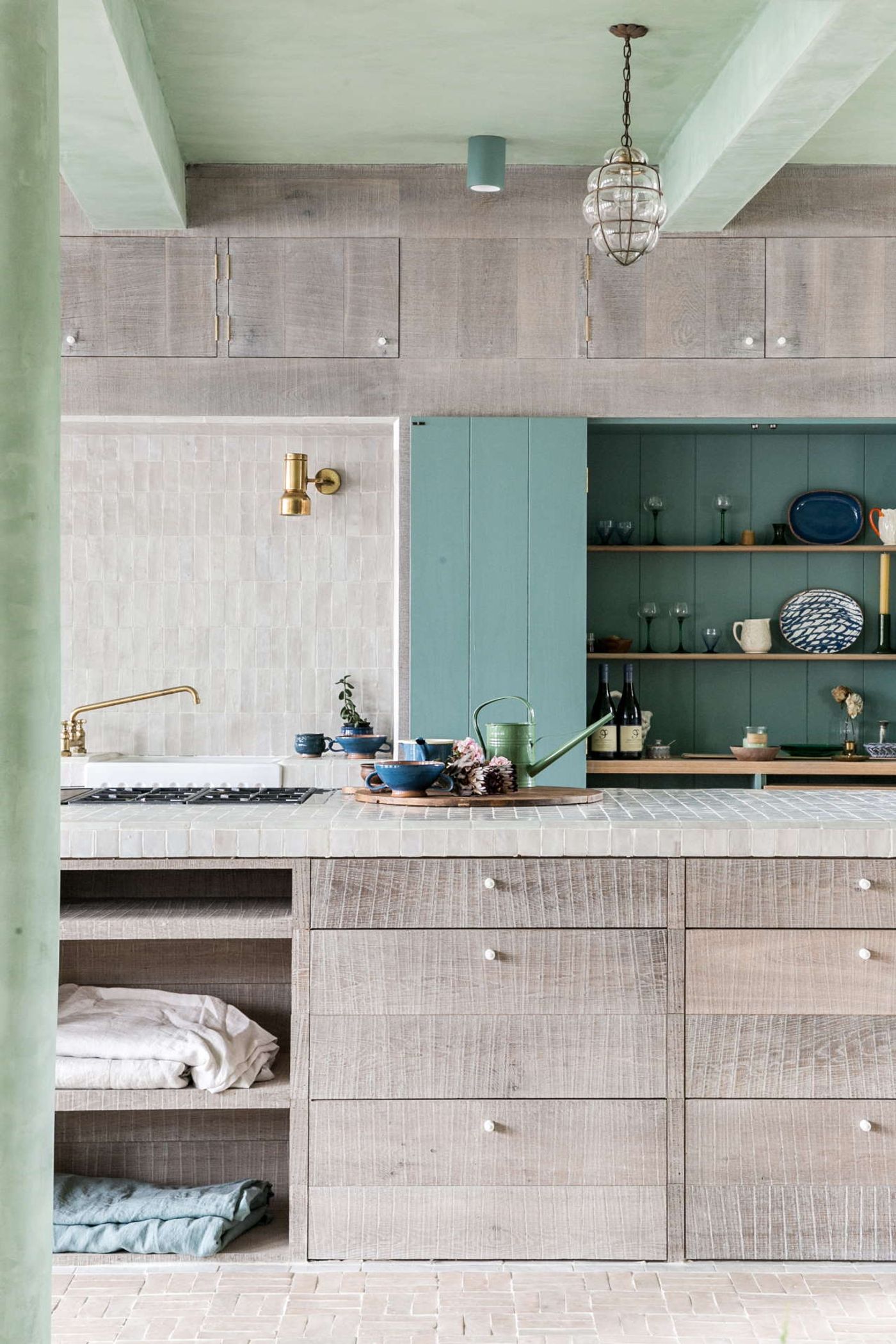
Photo by Taran Wilkhu.
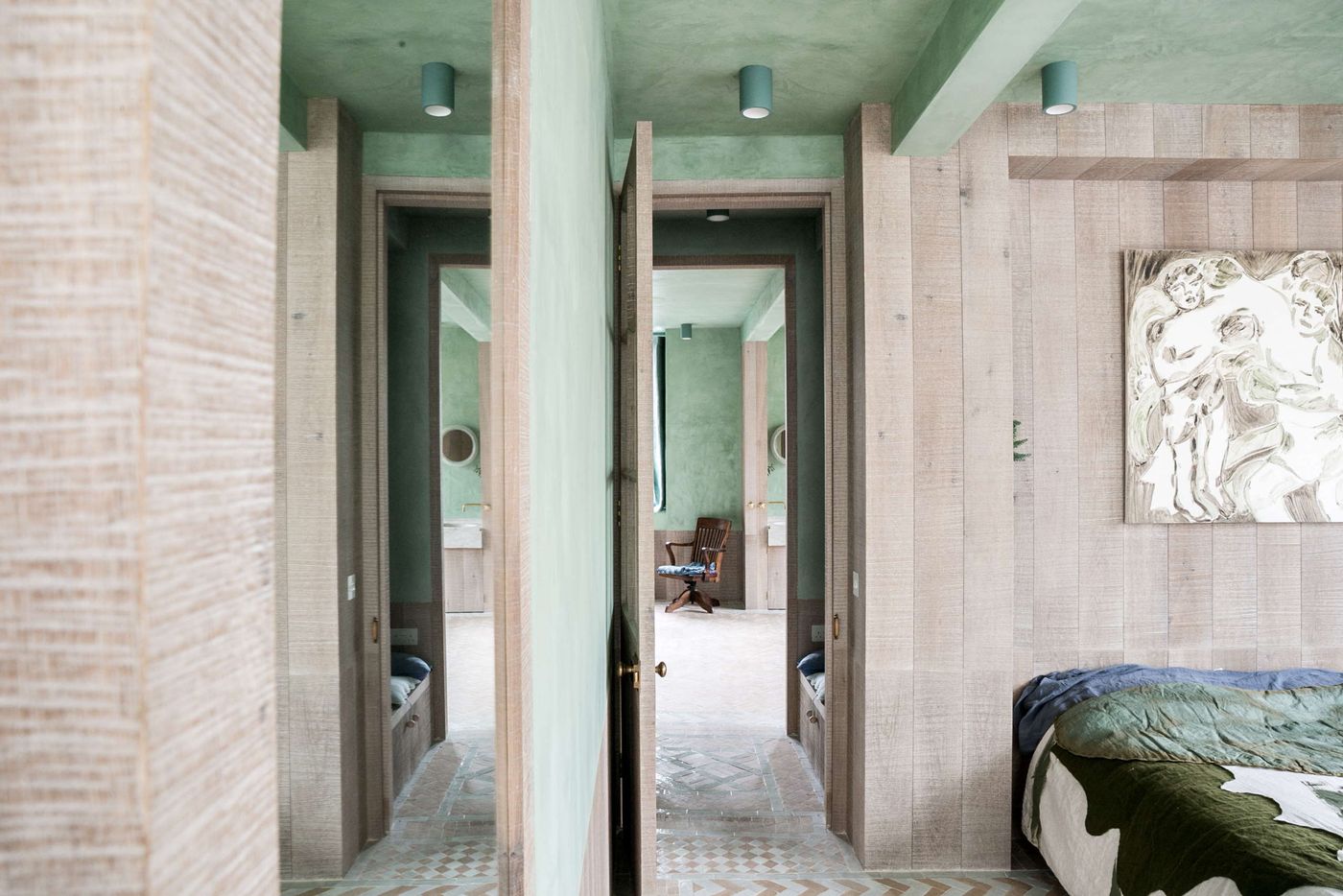
Photo by Taran Wilkhu.
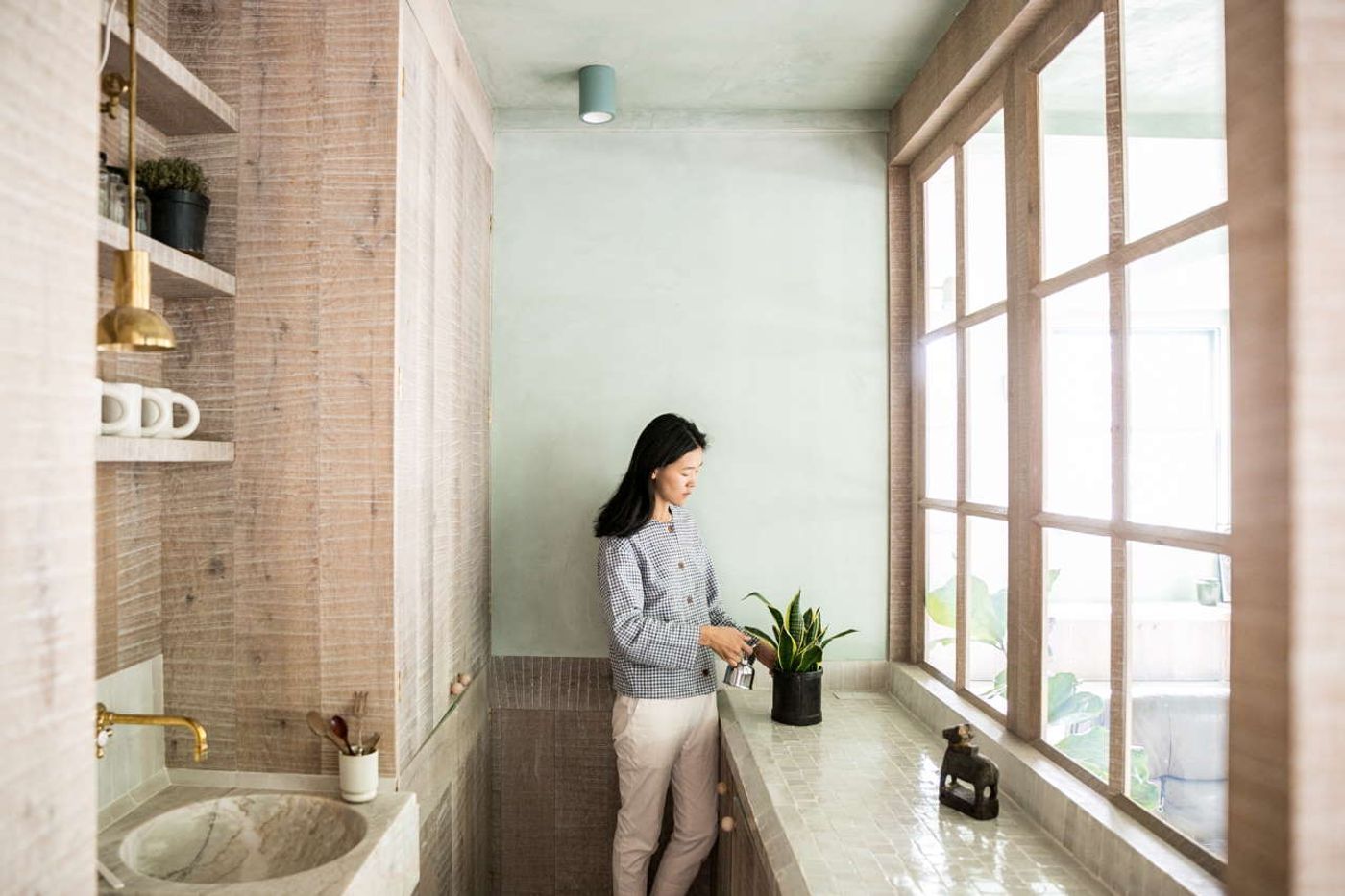
Photo by Taran Wilkhu.

Photo by Taran Wilkhu.
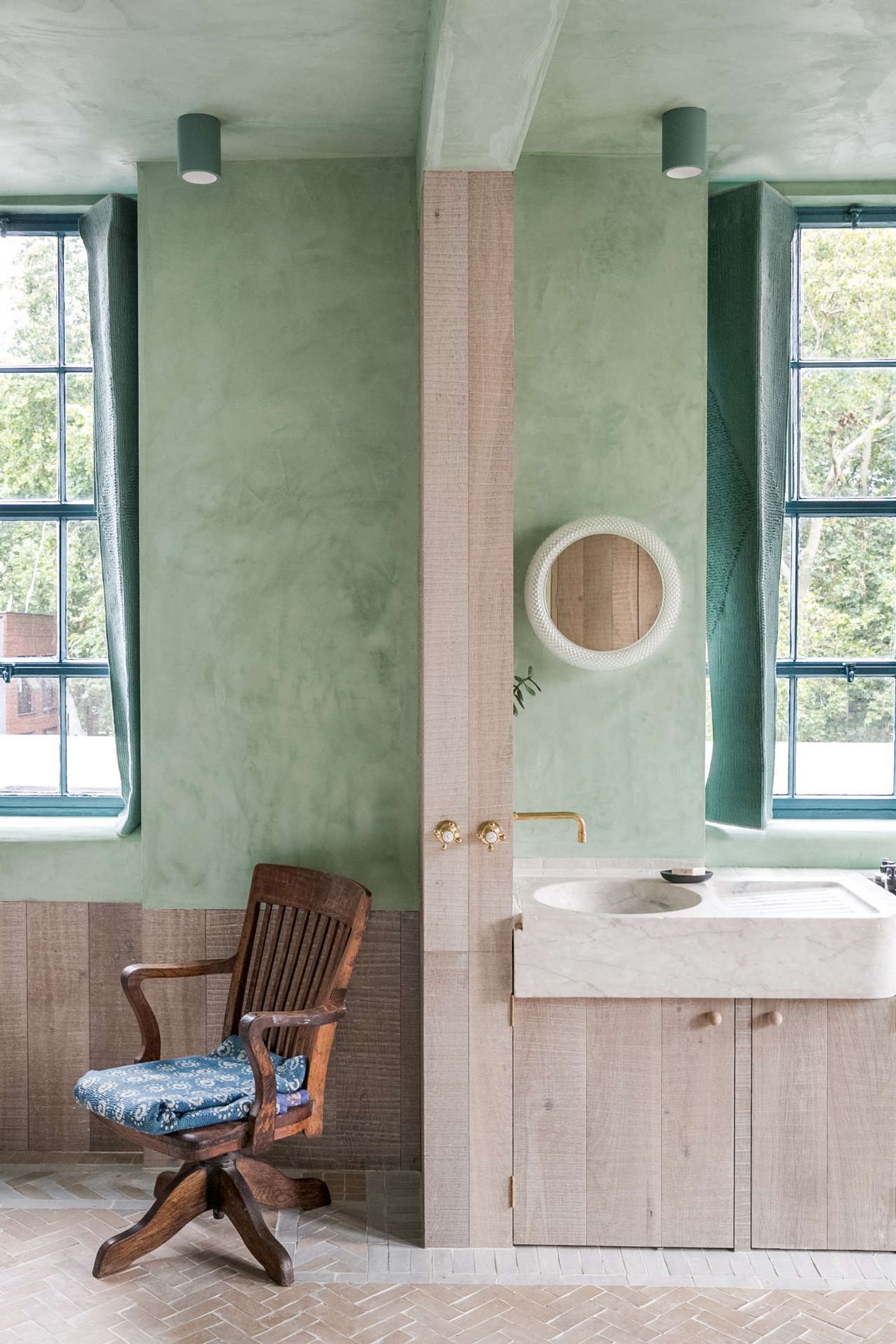
Photo by Taran Wilkhu.
The earthy terracotta hues of the floor tiles are complemented by a colour palette of soft greens that amplifies the verdant views outside, as well as evokes the feeling of being in a tree house, which is what test-living in the loft almost felt like to the couple. Pistachio-coloured walls and ceilings, made out of lime plaster mixed with a natural green pigment, fennel-green Crittall window frames, and darker green linen shutters, which were designed in collaboration with weaver Christabel Balfour and crafted on her loom, conjure a verdant ambience of tactile beauty.
Additional layers of green and blue hues, such as the painted timber cabinets—which were custom made on site for the project along with the panelled walls, doors, kitchen units, and built-in furniture—house plants, and hand-crafted glassware and ceramics, further enhance The Beldi’s textured, tactile and natural feel. It’s no coincidence after all that ‘beldi’ is a Moroccan word meaning traditional, handmade and local, concepts that this unique residence full-heartedly embraces.
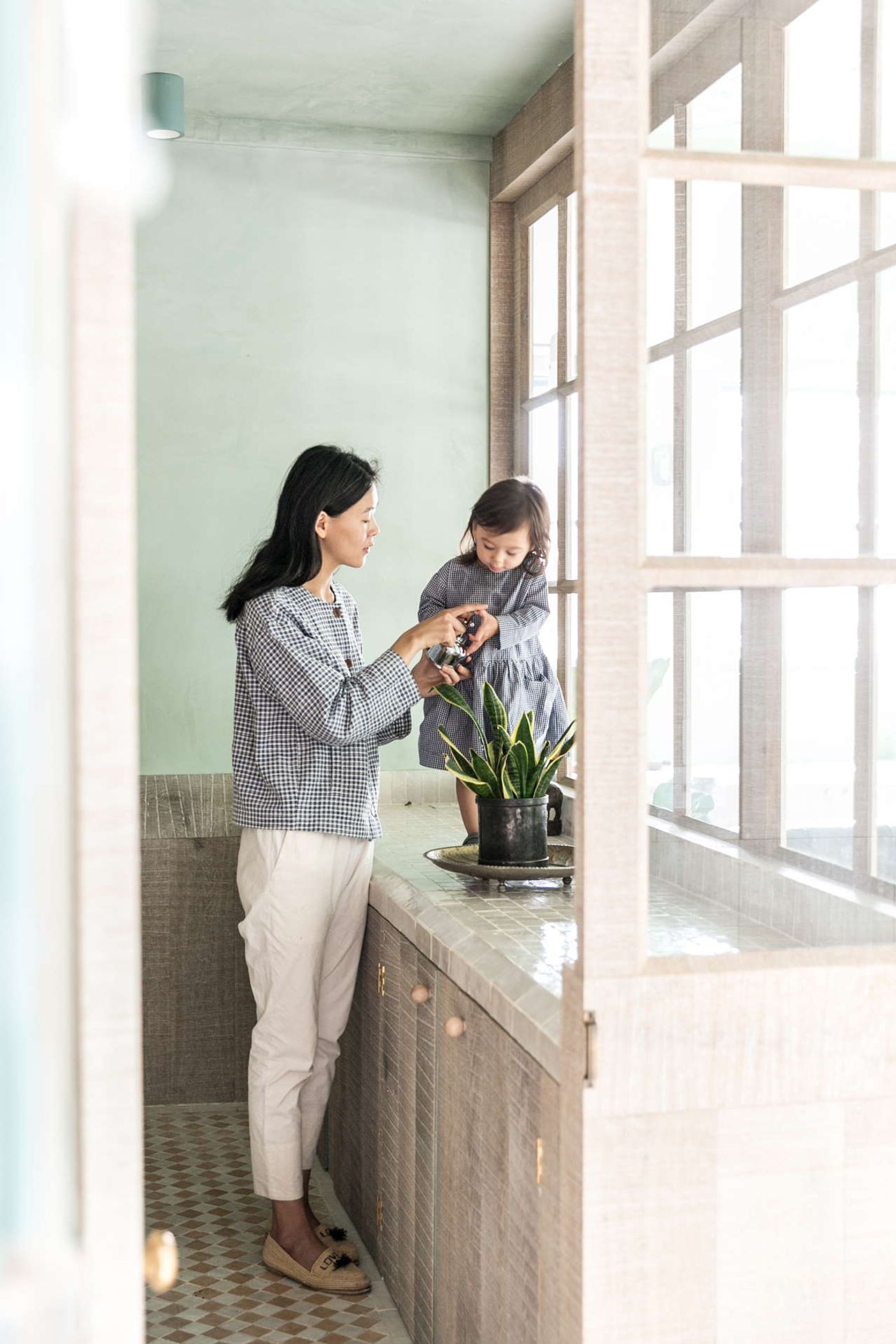
Photo by Taran Wilkhu.
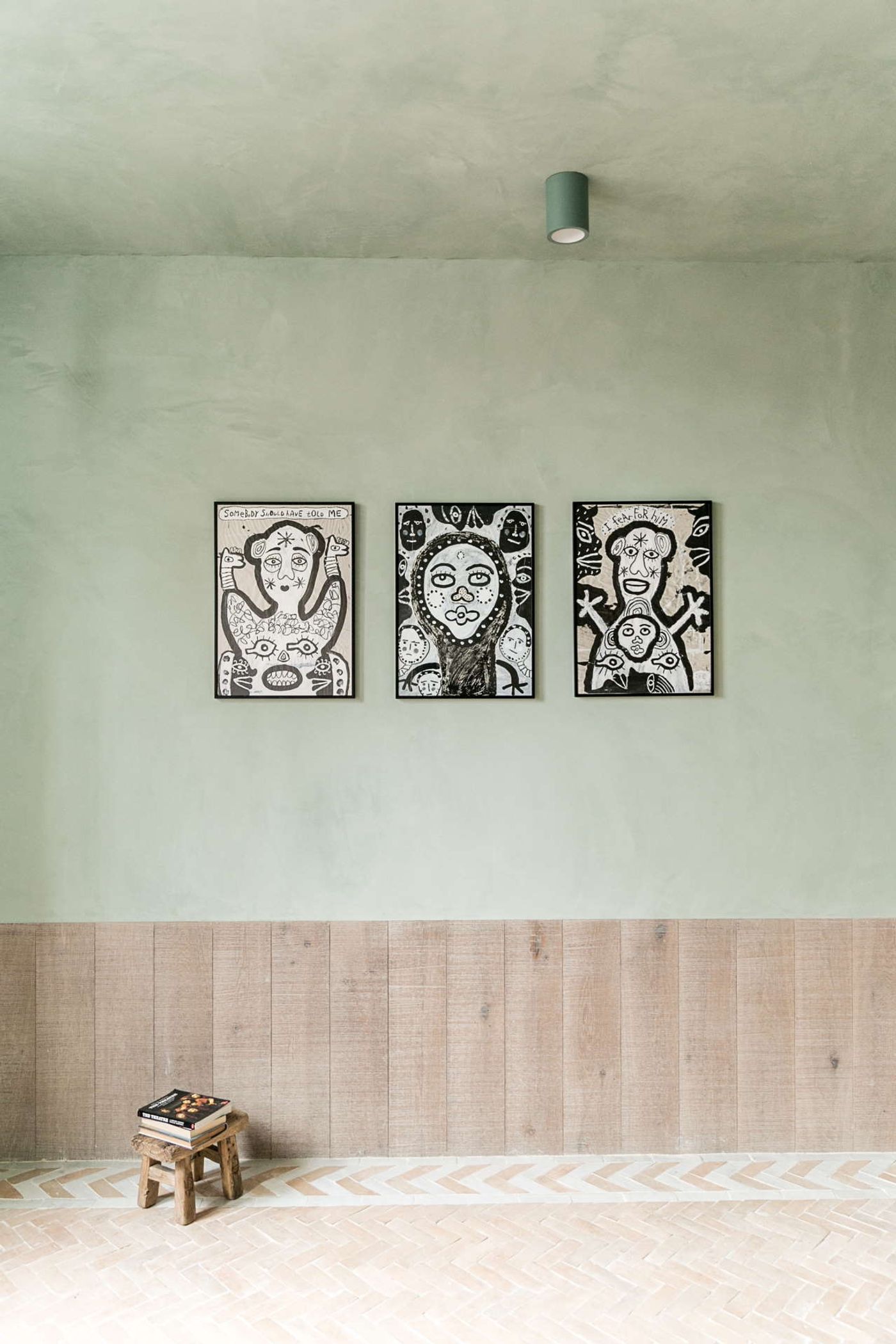
Photo by Taran Wilkhu.
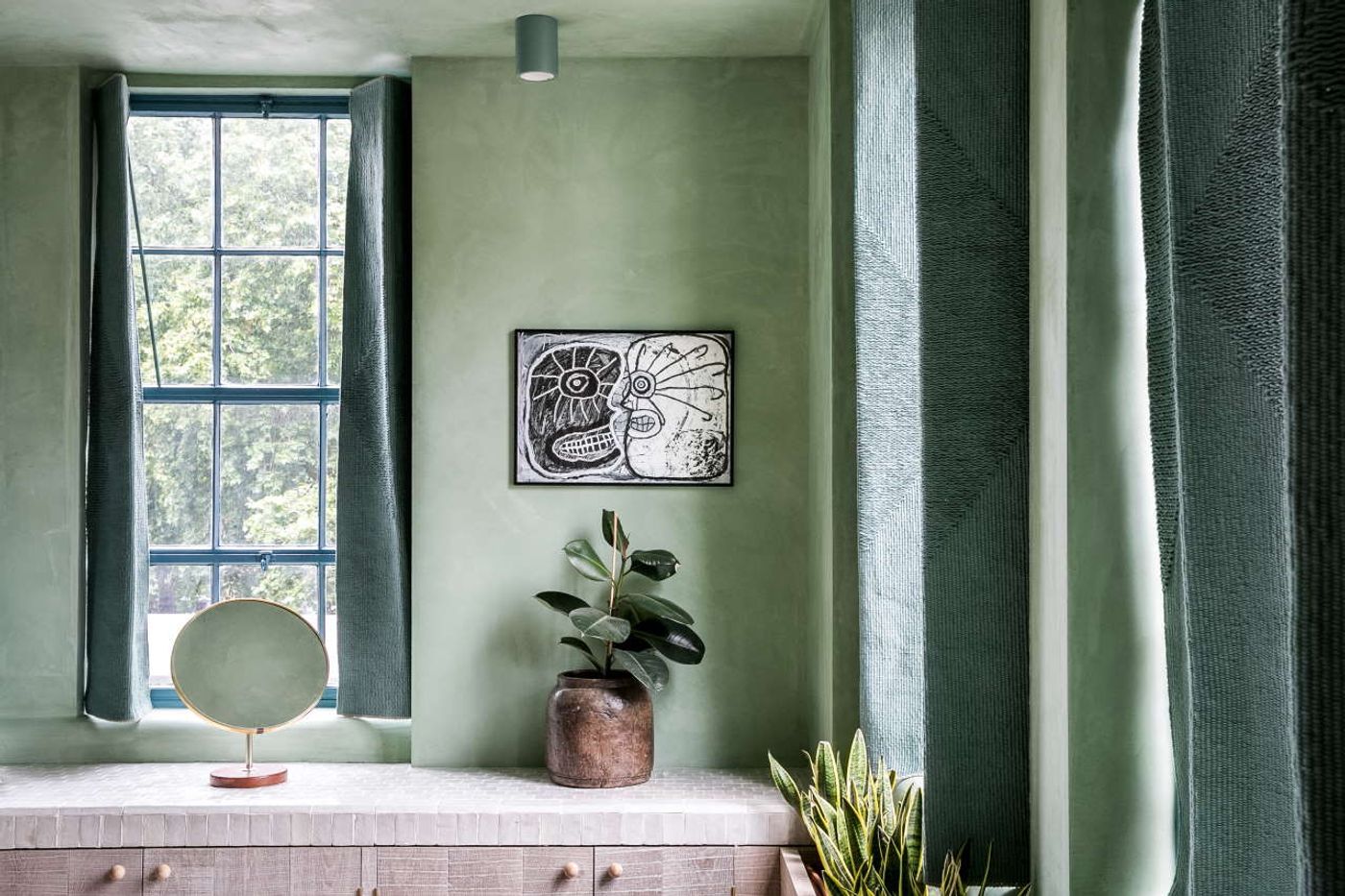
Photo by Taran Wilkhu.
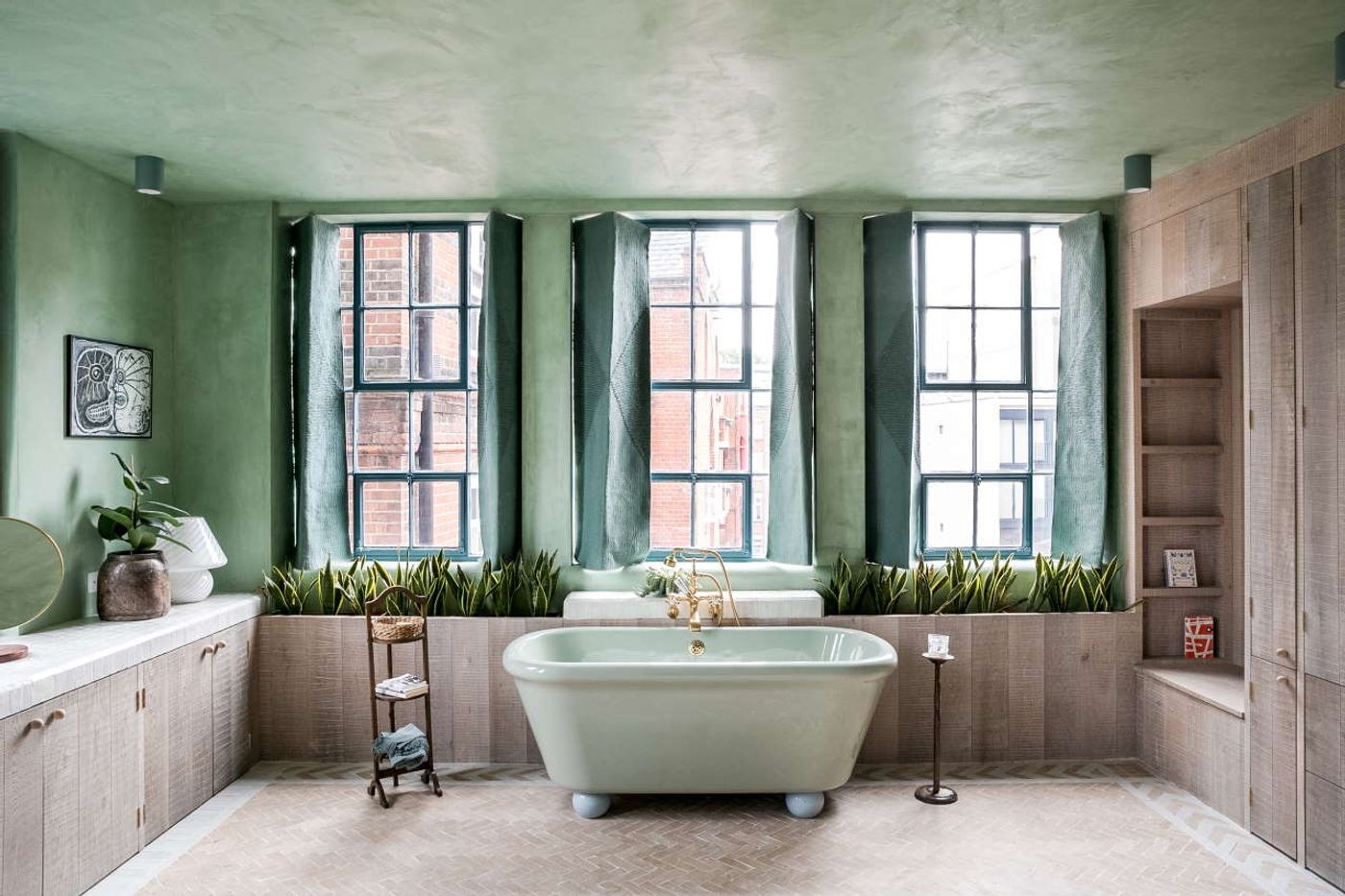
Photo by Taran Wilkhu.
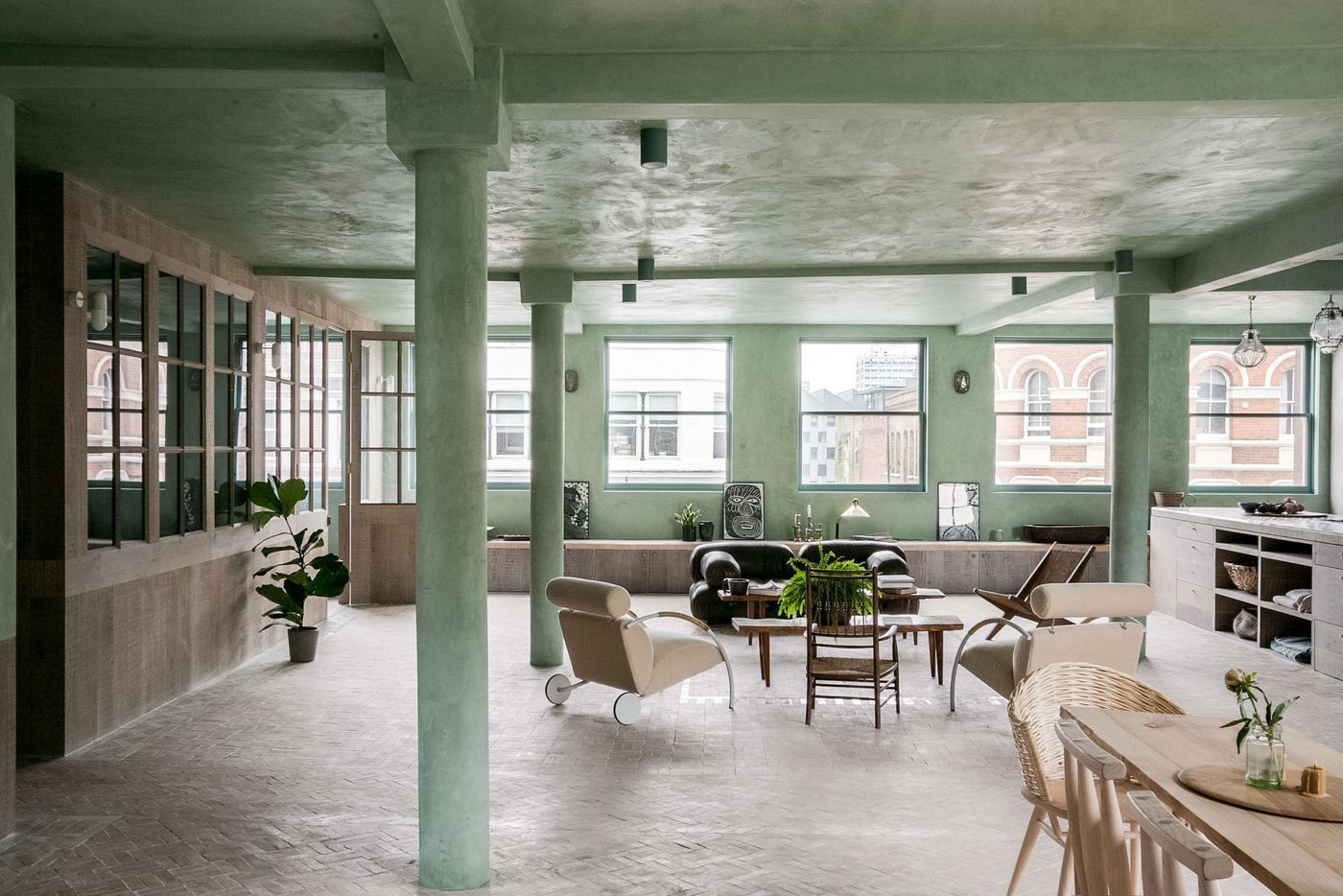
Photo by Taran Wilkhu.
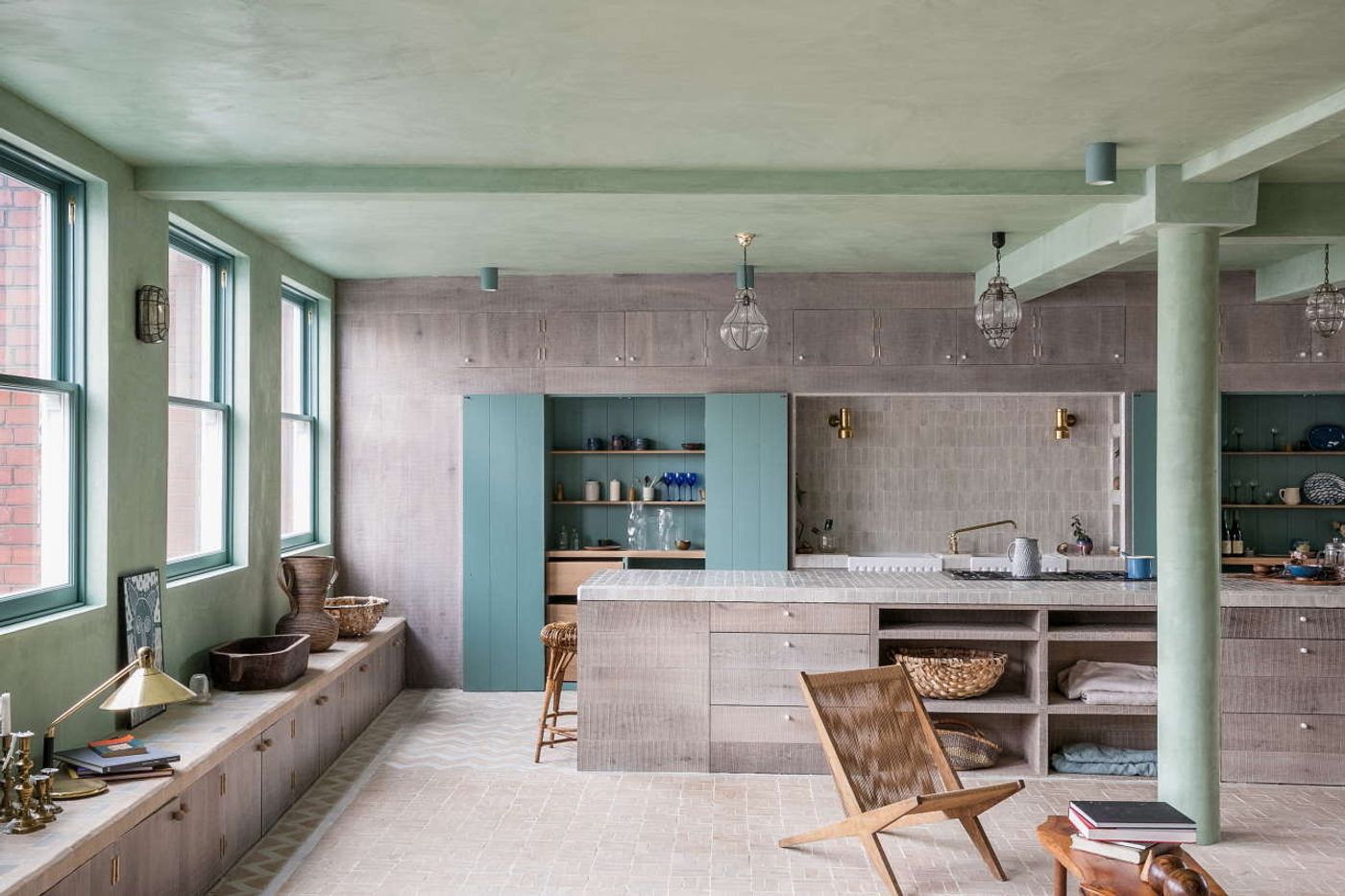
Photo by Taran Wilkhu.

Photo by Taran Wilkhu.